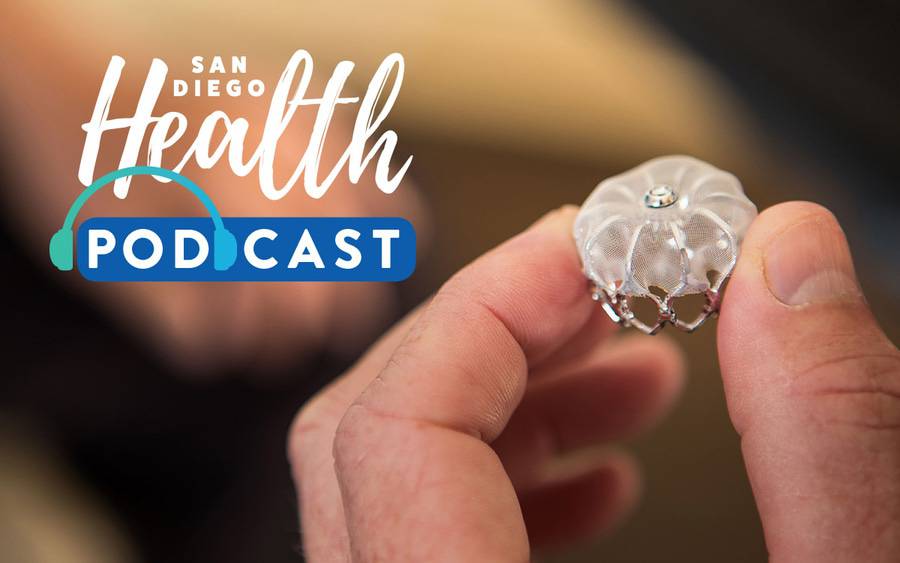How the Watchman Implant Is Helping People with AFib (podcast)
The heart device is reducing risk of stroke and providing alternatives to blood thinners

The heart device is reducing risk of stroke and providing alternatives to blood thinners
Atrial fibrillation (AFib) causes fatigue, dizziness and shortness of breath. It also raises your risk for a blood clot that can travel to the brain and cause a stroke.
Many people with AFib are treated with blood thinners, which can have side effects. But there’s a new device on the market that reduces the likelihood of a stroke and the need for blood thinners. It’s called the Watchman.
In this episode of San Diego Health, host Susan Taylor, talks with Douglas Gibson, MD, director of cardiac electrophysiology at Scripps Clinic and the Prebys Cardiovascular Institute, and his patient David Brush. Brush had been on blood thinners for years to control his AFib. But now he’s got the Watchman, and this innovative device has changed his life.
They will also discuss how to find the best cardiologist for you.
Listen to the episode on AFib and the Watchman
Listen to the episode on AFib and the Watchman
Dr. Douglas Gibson and David Brush discuss how the Watchman implant came to be the right treatment to manage Brush's atrial fibrillation condition (AFib).